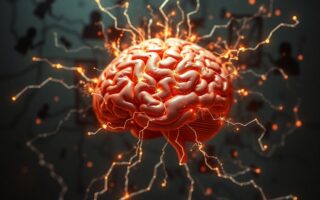Understanding Generalized Anxiety Disorder (GAD)
Generalized Anxiety Disorder (GAD) is a chronic mental health condition characterized by excessive, uncontrollable worry and anxiety about various aspects of life. Individuals with GAD often experience persistent, excessive anxiety and worry about everyday things, such as work, health, family, and finances, even when there is little or no reason for concern.
What is Generalized Anxiety Disorder
Generalized Anxiety Disorder (GAD) is a psychiatric disorder marked by persistent and excessive worry and anxiety about a wide range of everyday events and activities. Unlike situational anxiety, which is temporary and triggered by specific stressors, GAD causes individuals to experience constant and exaggerated worry that interferes with daily functioning.
Generalized Anxiety Disorder Symptoms
Symptoms of GAD may vary from person to person but commonly include:
- Excessive worry and anxiety about various aspects of life.
- Difficulty controlling worry.
- Restlessness or feeling on edge.
- Fatigue and difficulty concentrating.
- Muscle tension and irritability.
- Sleep disturbances, such as difficulty falling or staying asleep.
Generalized Anxiety Disorder Medication
Medications commonly prescribed for GAD include:
- Selective Serotonin Reuptake Inhibitors (SSRIs) and Serotonin-Norepinephrine Reuptake Inhibitors (SNRIs): These antidepressants are often the first-line treatment for GAD and help regulate neurotransmitter levels in the brain.
- Benzodiazepines: These medications provide rapid relief of anxiety symptoms but are generally prescribed for short-term use due to their potential for dependence and abuse.
- Buspirone: An anti-anxiety medication that works differently from benzodiazepines and is often used as an alternative for individuals who cannot tolerate SSRIs or SNRIs.
Generalized Anxiety Disorder ICD-10 and DSM-5 Criteria
In the International Classification of Diseases, 10th Revision (ICD-10), GAD is classified under the category “Anxiety Disorders” and assigned the code F41.1. In the Diagnostic and Statistical Manual of Mental Disorders, 5th Edition (DSM-5), GAD is defined by excessive anxiety and worry occurring more days than not for at least six months, along with the presence of specific symptoms.
Generalized Anxiety Disorder Treatment
Treatment for GAD often includes a combination of psychotherapy, medication, and self-care strategies:
- Cognitive Behavioral Therapy (CBT): CBT is a highly effective form of therapy for GAD that helps individuals identify and challenge irrational thoughts and beliefs contributing to anxiety.
- Medication Management: SSRIs, SNRIs, and other medications may be prescribed to help alleviate symptoms of anxiety.
- Relaxation Techniques: Practicing relaxation techniques such as deep breathing, progressive muscle relaxation, and mindfulness meditation can help reduce anxiety levels.
- Lifestyle Modifications: Regular exercise, adequate sleep, healthy eating habits, and stress management techniques can all contribute to overall well-being and reduce symptoms of GAD.
Generalized Anxiety Disorder Self-Care
Self-care strategies for managing GAD include:
- Establishing a consistent sleep schedule.
- Limiting caffeine and alcohol intake.
- Engaging in regular physical activity.
- Practicing relaxation techniques.
- Setting realistic goals and priorities.
- Seeking social support from friends and family.
Conclusion
Generalized Anxiety Disorder is a complex mental health condition characterized by persistent and excessive worry and anxiety. Understanding the symptoms, treatment options, and self-care strategies is essential for effectively managing GAD and improving overall quality of life. By seeking professional help and implementing self-care practices, individuals with GAD can learn to cope with their symptoms and lead fulfilling lives.













